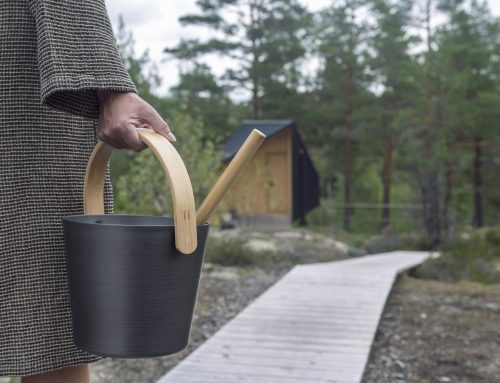Natural, dim and minimalistic. This is how Laura Seesmeri, postdoctoral researcher at the University of Turku, describes sauna aesthetics. In her doctoral thesis ‘Sauno itsellesi menneisyys’, Seesmeri has studied sauna aesthetics as part of the cultural heritage of sauna.
“There are two aspects to sauna as a space: what it is like as a place and what it is like as an experience,” Laura Seesmeri says.
Seesmeri points out that sauna is a unique aesthetic space in Finnish homes, as it is a space that has only one purpose – sauna bathing.
“In everyday language, aesthetics often refers only to beauty and appearance, but the experiential aspect of spaces is also important, especially in relation to sauna.”
As material for her doctoral thesis, Laura Seesmeri used both marketing material from sauna heater manufacturers and the Finnish Literature Society’s collections of oral history data.
“Especially the stories about sauna in the oral history data described sauna as an experience. Most of the stories in the data were very personal. The stories emphasized a certain sense of connection between the self and the universe as they reflected on the significance of sauna.”

Sauna is a place for relaxation
Sauna aesthetics support the idea of sauna as a place for relaxation. According to Laura Seesmeri, saunas are minimalistic, calm and dim.
“The space is minimalistic and unsurprising. Although sauna bathing is a multi-sensory experience, visually saunas are very dim, and the sense of sight is not emphasized.”
According to the researcher, sauna as an aesthetic space has remained very much the same over the years. Although there are changing trends in sauna interiors, in certain ways they remain natural and unpretentious.
“Of course, saunas have seen various trends as a space. At one point, very dark, nearly black saunas were popular, followed by light, almost spa-like saunas. But even in these trends, the basics, such as wood panels as a wall material, have persisted. We have not seen lavishly decorated saunas or e.g., saunas with scenic wallpaper,” Seesmeri explains.

Security in permanence
Laura Seesmeri believes that sauna gives Finns a certain sense of security. This feeling is reinforced by the elements associated with sauna: its permanence and closeness to nature.
“Most Finns have memories and experiences of a summer sauna by the water. This same experience is then sought in all saunas – perhaps this is why all our saunas look quite similar.”
“Scents are also a powerful part of the sauna experience. As sauna whisks are rarely used in home saunas anymore, the connection with and scent of nature is simulated with various sauna scents. The scent of a birch whisk or warm tar gives us a sense of connection with nature.”
The soundscape of saunas has also remained unchanged.
“The same hissing sound of water hitting the sauna stones can be heard in both a wood-fired cottage sauna and an electric sauna in an apartment building,” says Seesmeri.
“The sauna is a quiet place. In there, it is the sounds of the sauna itself that people focus on,” she continues.
SEE THE FULL PISARA COLLECTION »
Read also:
6 reasons why the Rento Pisara wash basin is perfect for a Finnish sauna












